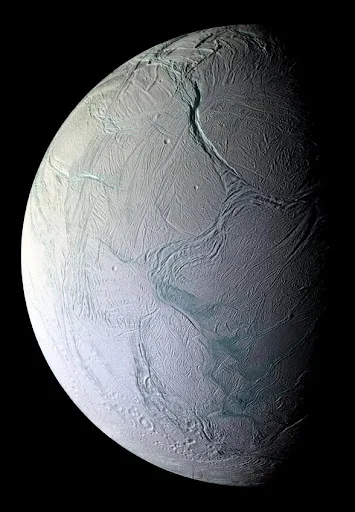Finding life on Saturn's moon Enceladus may be easier than we thought!
The icy moon Enceladus, orbiting the majestic gas giant Saturn, has long captivated scientists with its potential to harbor life beyond Earth. With its vast subsurface ocean, spewing plumes of water vapor, and a cocktail of intriguing chemicals, Enceladus has become a top contender in the search for extraterrestrial life. And now, new research suggests that finding evidence of this life might be easier than we previously thought.
Easier access to potential biosignatures
One of the biggest challenges in searching for life on Enceladus is accessing its subsurface ocean. This ocean lies beneath a thick layer of ice, making it difficult for probes to directly sample its waters. However, a recent study published in the journal Nature Astronomy has identified specific locations on Enceladus' surface where fissures and fractures intersect with the plumes. These areas, the researchers say, could offer a direct window into the ocean below, allowing for easier sampling and analysis of potential biosignatures – the chemical or physical signs of life.
Organic molecules in the plumes
The study's authors used computer modeling to simulate the movement of water and particles within Enceladus' ice shell. They found that the identified locations, particularly near the south polar region, experience a unique interplay between the plumes and the ocean. This interaction could bring up organic molecules and other potential biosignatures from the ocean depths and deposit them on the surface, making them readily accessible for future missions.
Future missions to Enceladus
This discovery has significant implications for future missions to Enceladus. Instead of drilling through the thick ice, spacecraft could land on these specific surface locations and directly collect samples from the plumes or even the exposed ocean water. This would greatly simplify the process of searching for biosignatures and potentially bring us closer to answering the age-old question: are we alone in the universe?
Ongoing research and the thrill of discovery
While the new research is promising, it's important to remember that finding life on Enceladus, or anywhere else beyond Earth, remains a complex and challenging endeavor. Scientists are still actively researching the moon's habitability and the potential forms of life that could exist there. Each new discovery, like the identification of these accessible surface locations, adds another piece to the puzzle, bringing us one step closer to unraveling the mysteries of Enceladus and the possibility of extraterrestrial life.
The search for life on Enceladus is a testament to our insatiable curiosity about the universe and our place within it. With each new mission and discovery, we inch closer to understanding the conditions that support life and the possibility that we are not alone in the vast cosmos. The icy plains of Enceladus, once a distant and frozen world, now beckon with the promise of revealing life's secrets, waiting to be unraveled in the plumes of a distant moon.
I hope this article has piqued your interest in the exciting search for life on Enceladus! If you have any further questions or would like to explore specific aspects of the research in more detail, please don't hesitate to ask.
